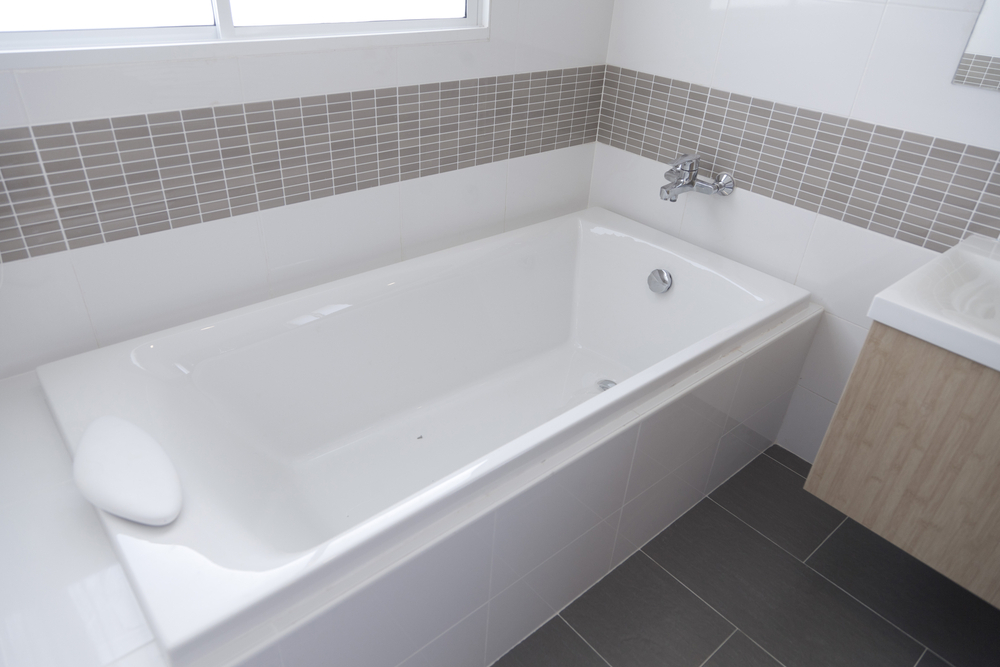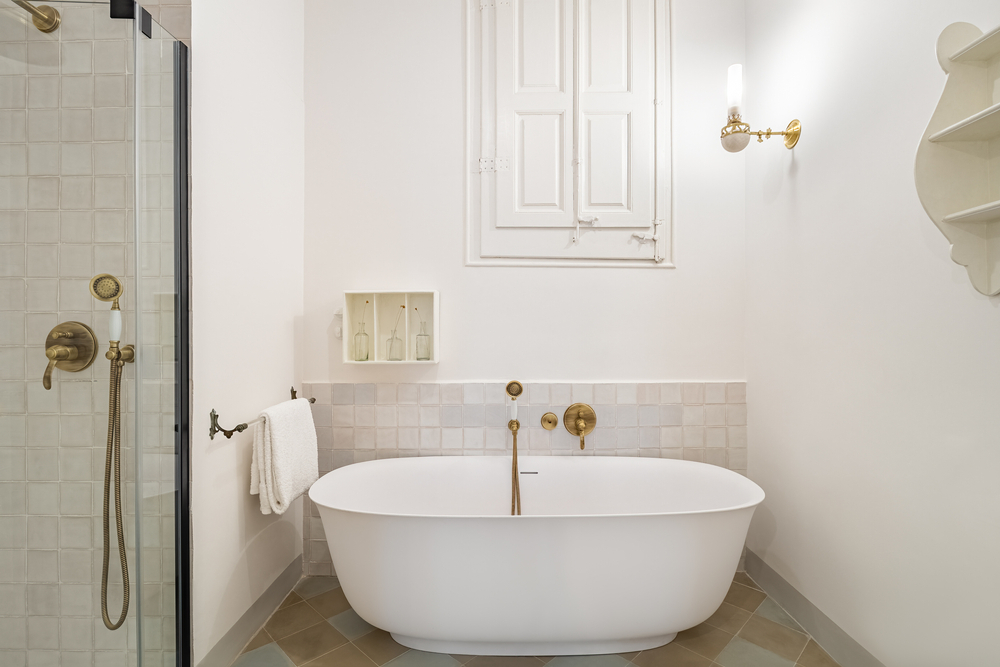After a long day or a hard workout, many of us are looking for that deep soak. You have surely seen the commercials with many candles around the tub, bubbles, and maybe even a few bubbles in a slender glass. Snap out of it! This does not need to be a dream. This can be your new reality with your new bathroom remodel. So many homeowners only wish that they had a new bathtub. Wish no longer! The luxurious or practical tranquility option is just a selection away with your remodeling project.
One of the first steps in choosing a new bathtub is budget. Going overboard on a bathtub when you have your entire bathroom remodel to consider would take away from the enjoyment of that deep soak after a long day. Setting a budget will also help you eliminate bathtubs that are out of your bubble budget.
Style
When it comes to bathtubs, there are quite a few styles to accommodate just about any bathroom. The amount of space you have will largely influence what style is right for you. While you may be inclined to an oval-shaped freestanding bathtub, you might only have enough room for a round bathtub.
Air Tub
An air tub is a bathtub that is equipped with multiple small jets that blow heated air into the bathwater to create a massaging sensation. Although they are pretty similar to water whirlpool baths, air tubs use their jets to create a bubbling sensation rather than a deep, massaging sensation. This results in a bathtub that does not require frequent cleaning, unlike whirlpools. Conversely, air tubs do not retain heat for as long as whirlpool tubs and are more designed for those that want a quick massage rather than a long soak.
Alcove
Alcove or recessed tubs are installed in a recess of three connecting walls with one finished side. These bathtubs are generally found in apartments or smaller homes as they do not take up a lot of space, and many can be combined into a shower combo.
Angled
The angled style is for those who want something a bit different from the angled or traditional design. An angled bathtub is slopped slightly higher on one side, with the idea of providing support for your back and neck during the bath. Highly flexible in size, these can be equivalent to an oval bathtub in size or be found larger than both the oval and normal freestanding styles.
Clawfoot
In the traditional bathtub style, a clawfoot is a freestanding bathtub supported by four ‘claws’ or legs on the bottom. This design dates back to early Victorian era bathrooms and is still widely popular today.

Corner Tub
Similar to an alcove, but much larger is the corner tub. These are much wider bathtubs than the typical alcove bathtub, but the space they fill is similar. Alcove bathtubs are usually installed adjacent to three connecting walls, usually a window. More for relaxation and therapy, these bathtubs are more similar to hot tubs than normal tubs.
Freestanding Bathtubs
Possibly one of the most popular styles of bathtubs is the freestanding bathtub. It is not difficult to see why. Freestanding bathtubs can freely fit just about any space and do not require connecting walls to be installed. They also provide a more vibrant centerpiece for your bathroom aesthetically compared to most drop-in tubs and are priced relatively evenly to the other options on the market.
Oval
Contrary to the more classic design of the clawfoot is the oval bathtub. These bathtubs are round in shape and symmetrical, quite similar to a water basin. Quite popular in apartments or smaller homes where space is a premium, these bathtubs have a more modern look that contrasts nicely against the sharper corners and edges of the rest of your bathroom.
Regular
The classic look that has existed since the early 1800s and is widely popular. These are traditionally longer and rectangular, requiring more space than the alternatives.
Soaking
A soaking bathtub is typically either oval or circular. Generally a fair bit taller than normal bathtubs, the purpose of these is to sit comfortably in place to allow yourself to soak. These bathtubs also tend to run a broad spectrum of sizes as there are the longer, more elegant styles for larger homes and, of course, the much more compact ones for smaller homes. The smaller size is generally more popular as an apartment bathtub.
Undermount/Drop-in
Undermount bathtubs are installed underneath the surrounding deck or ingress, so it looks more uniform to your bathroom as the rim is hidden. Drop-ins are installed by dropping them in a carved-out area then sealed in so the rim is more visible. Beyond the visual aspects, there is not much difference between an undermount and drop-in bathtub. They both save space, they both come in many different styles and material and many of them can be fitted with powered jets for a more relaxing bath experience or combined with a shower for multipurpose use.
Walk-in
A walk-in bathtub is a bathtub fitted to allow the user to walk in and sit down without fear of slipping. There are grooves and notches along the insides of the tub to provide walking grip and generally, there are also handholds to assist balance and stability. These are most prominent in homes with elderly folk as these will allow them to bathe without further assistance.
Whirlpool
A whirlpool tub is a bathtub that houses self-contained jets. These jets are either air or water jets, but their primary function is to massage the user for relaxation and health purposes. Air jet whirlpools contain dozens of small jets that pump warm air through to create air bubbles, while water-jet whirlpools have fewer but larger jets that push water at high speeds. The primary advantage of a whirlpool tub is that it creates a deeper massage sensation than any other tub on the market.
Once you have decided which style of bathtub works best for you, start your shopping. You may find it easier to make a decision when you can see bathtub displays set up. For a wide selection of bathtubs, including displays, check out your local home improvement stores.






